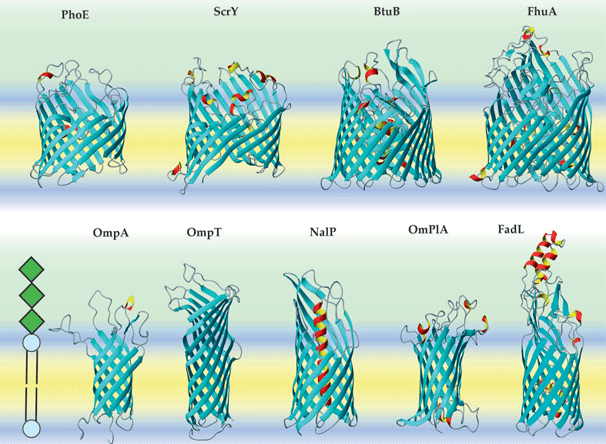Biochemistry 308: Proteins in Membranes

The hydrophilic phosphate "heads" line both surfaces of the membrane while the hydrophobic lipid "tails" form the core. So what kinds of proteins would be able to be part of such a membrane???
How can an alpha-helical protein span a lipid bilayer?
An alpha helix that has primarily hydrophobic sidegroups on each amino acid can reside in the hydrophobic zone because the polar amines and carboxyls of the amino acid skeleton are hydrogen bonded to each other. If there are sections of the protein that have polar or charged side groups, those must extend out of the hydrophobic region and form the anchors in the watery environment on either side of the membrane.

How can a beta-sheet protein span a lipid bilayer?
A beta sheet will curl into a beta barrel with the polar or charged groups inside the barrel, and the hydrophobic groups on the outside, thus settling comfortably into the hydrophobic lipid interior. Barrels have 8 to 22 strands. Polar and charged regions of the protein stick out of the bilayer into the watery solvent on each side. Beta barrels can make nice pores in a membrane for the transport of ions, water and such.

Some known transmembrane beta barrel proteins.

This lovely is a liposome surrounded by water molecules. A liposome is a lipid bilayer formed into a sphere with a hydrophilic interior and exterior. Liposomes are used for drug delivery devices and in cosmetics. They are present in mayonnaise. Using a liposome you can make "powdered water". They form spontaneously especially under pressure.